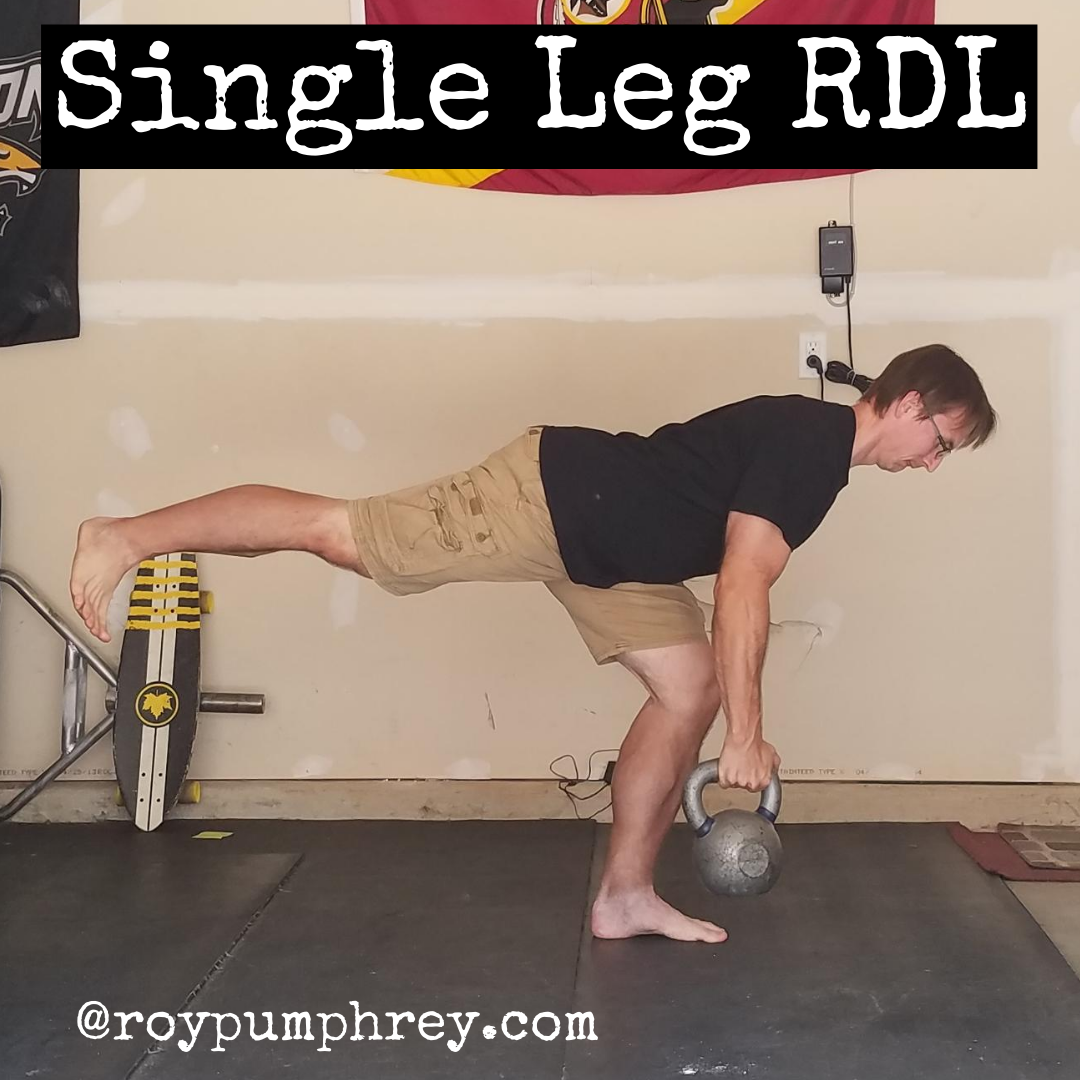
The Single Leg RDL might be my favorite lift to prescribe.
Not most RX’d (thats how the cool kids used to write prescribed circa 2015), favorite.
It’s almost like a right of passage.
When it shows up on your program it’s like you’ve graduated from padawan learner to Jedi apprentice.
But you ain’t no Jedi…..
Not yet.
Does this mean everyone gets SLRDL’s?
Nope.
Sometimes it’s not a good fit for that person.
Sometimes Single Leg RDL’s are not worth the trouble and investment in time to pattern correctly and load effectively.
But for many, many clients of mine,
“You’re gonna get em, you’re gonna do them, and YES, they will suck”
Single Leg RDL’s How I Love Thee, Let me Count The Ways:
Hip Hinge
As a society we REALLY SUCK AT HIP HINGING.
So much so that NPR made a big deal about this “revelation” that people in other culture bend over with a flat back. instead of a rounded one
“I first noticed this mysterious bending style in 2014 while covering the Ebola outbreak. We were driving on a back road in the rain forest of Liberia and every now and then, we would pass women working in their gardens. The women had striking silhouettes: They were bent over with their backs nearly straight. But they weren’t squatting with a vertical back. Instead, their backs were parallel to the ground. They looked like tables.” – Lost Art Of Bending Over: How Other Cultures Spare Their Spines
Yes, the simple act of HINGING the HIPS was foreign to someone.
While that might seem absurd to you, because you read these ramblings and act on them…right?
I SEE THIS ALL THE TIME.
Literally, everyday.
Why Are We So Bad At Hinging?
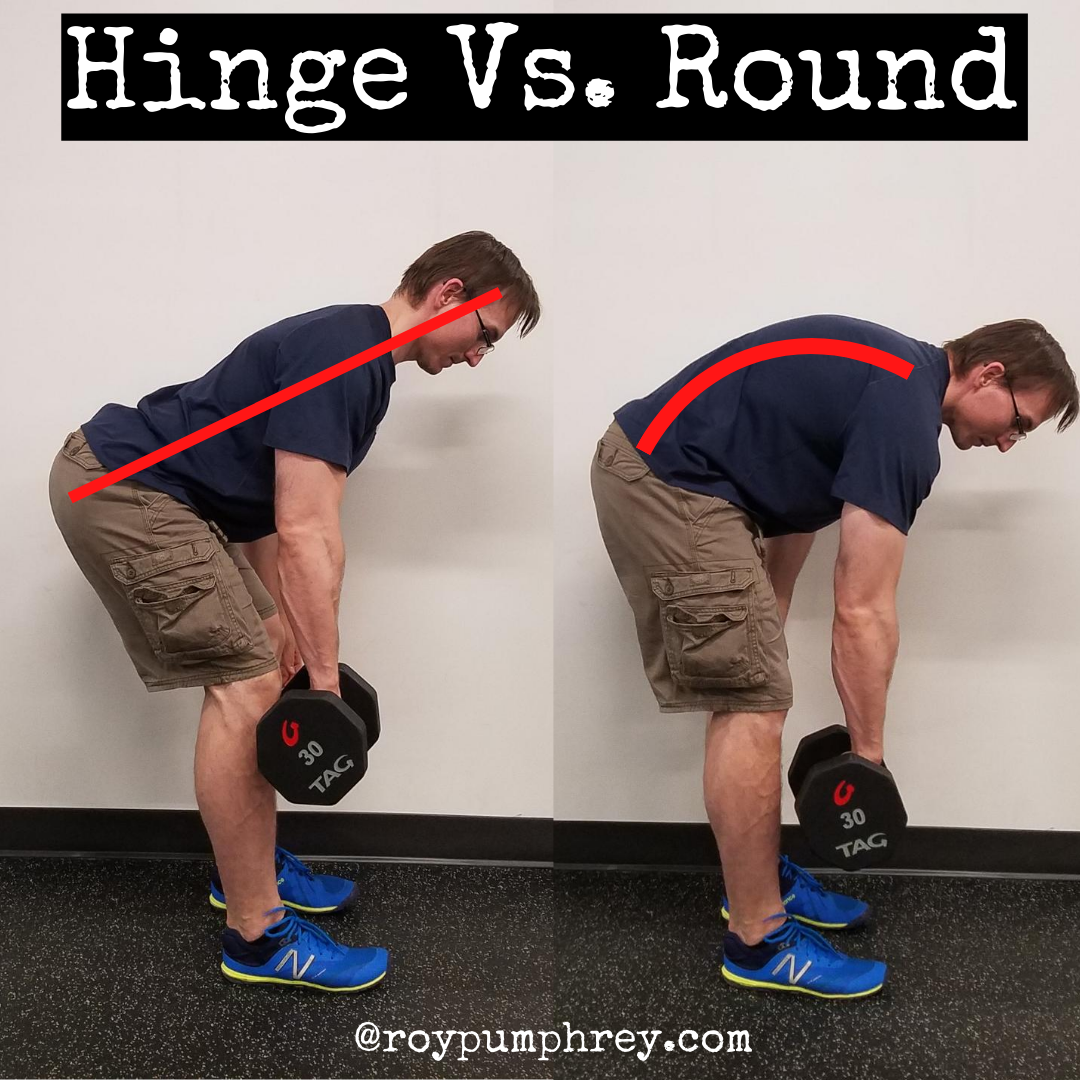
The truth is, I have no clue.
My best guesses are:
1. We got a lot of bad information in things like, “lift with the legs”, that should have been, “Lift with the hips”
Instead of using a strategy to emphasize the quads (knee joint), “lift with the legs”, we should have been teaching people to use a strategy that emphasizes using the hips.
2. Generally speaking, we have created a “sitting culture” and that has lead to several physical outcomes which ain’t too hot.
For starters:
- Rounded over, flexed forward (kyhphotic) postures
- Weak Glutes
- Weak Hamstrings
- Poor movement competency and kinesthetic awareness.
- Quad dominance and over-reliance on knee and low back flexion-extension patterns (vs hip flexion- extension patterns)
3. Shoes:
If someone struggles with Single Leg Deadlifts the very first thing I try is take their shoes off and have them do it barefoot.
Its not always the cure, but more often then not there are instantaneous improvements in the ability to hinge and do a Single Leg RDL.
But, But, These are “Crosstrainers” Made for Lifting!
No, those are tools of Satan made to extract the product of your labor from you in return for comfort and “style“, but little in the way of performance improvements.
Granted, there are many great shoes to lift in.
These are generally flat(er) soles that are flexible yet fairly hard.
The Typical Athletic Shoe Sucks Because:
- They provide too much padding and contouring, deadening the foot propreoceptors.
- They rob us of big toe function
- Most athletic shoes have a raised heel and pitch you forward
This literally acts as a buffer between you and the ground.
Think about that for a second.
A buffer between YOU and the GROUND.
This means the inputs from the ground (ground reaction forces, position of the foot, pressure on specific areas of the foot, etc) are all altered and that altered interaction with the ground affects how YOU respond to the ground through the foot,
“The major findings of this study were that: (1) foot landing position affects inherent body dynamics (e.g. stiffness, damping); and (2) inherent body dynamics may be the important factor determining the shape of the GRF vertical component.” – THE INFLUENCE OF FOOT POSITION ON BODY DYNAMICS
The “Great” or “big” toe is really f-ing important.
If you’re big toe doesn’t move and can’t exert enough pressure on the floor, it’s going to affect your ability to perform Single Leg RDL’s all day,
“constraining the great toe deteriorated the subjects’ single-leg stance performance and worsened the directional control ability during forward/backward weight shifting.”- The Role of the Great Toe in Balance Performance
A life spent living in shitty shoes, slowly robs us of not only foot, but, big toe mobility and strength
You’d probably be surprised how many people can not drive their big toe into the ground and “root” the foot effectively.
Btw: Driving your big toe down and rooting the foot is not curling your toes under your foot.
Rooting is driving the big toe down and pulling back, creating a stiff, stable arch in the foot and reflexively activating the glute via the Babinski reflex.
What I’m getting at is, feet in those thick, soft-cushioned soled, highly contoured, restrictive,“athletic” shoes are not all that athletic.
“With over 100 muscles, tendons, and ligaments, 26 separate bones, and 33 joints, the foot and specifically the arch likely evolved for a role as specialized as the thumb and fingers did for fine manual control (Rolian et al. 2010). …… These findings suggest that the entire neurophysiology and anatomic architecture of the foot are uniquely designed for and integral to performing the complex task of bipedal postural control,” –Foot anatomy specialization for postural sensation and control
Single Leg RDL’s necessitate rooting and hip hinging.
Getting out of these types of shoes, reacquainting your feet with the ground, almost always improves the ability to perform Single Leg RDL’s.
Posterior Oblique Sling System:
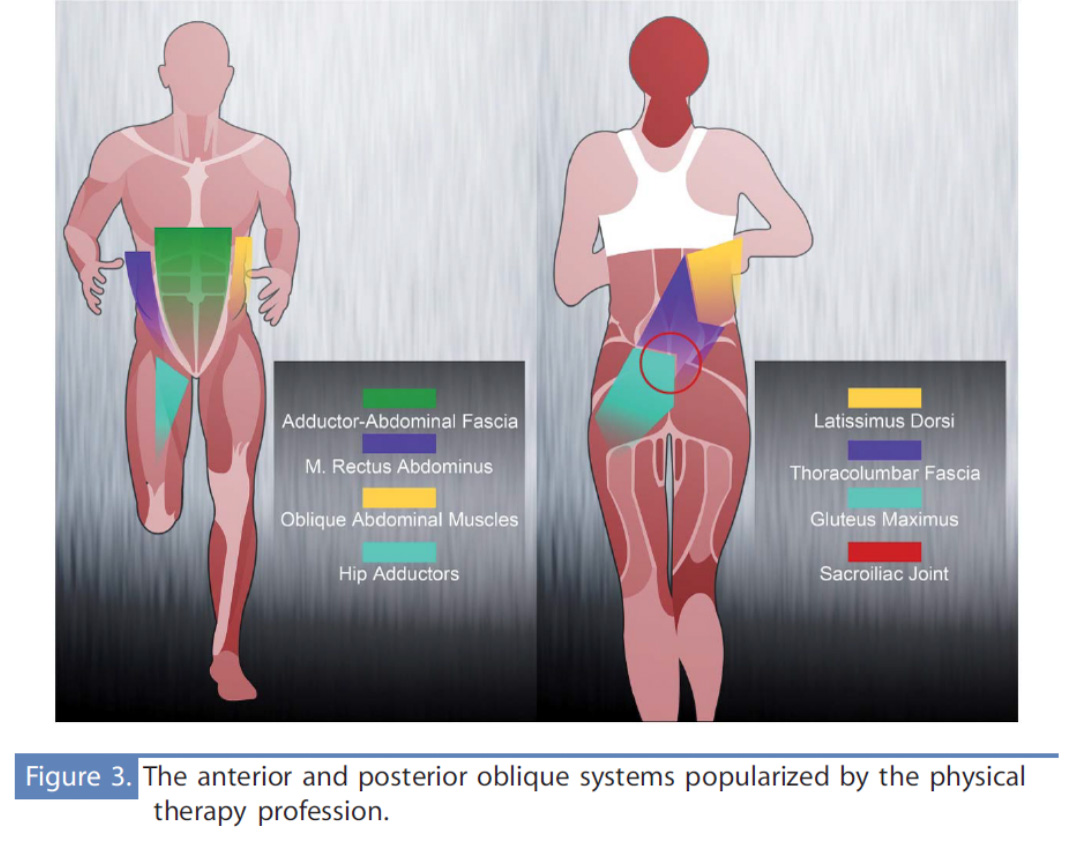
from: Anterior and Posterior Serape: The Rotational Core
This is where the lats come in.
Let us remember that sage wisdom,
Lats are Core
And
Glutes are Core
Creating tension through the contralateral lat and glute creates spinal super stiffness through the posterior lateral oblique sling system,
“The latissimus dorsi and gluteus maximus muscles are linked obliquely to the posterior spine by the thoracolumbar fascia, and this is referred to as the posterior oblique sling system. When walking, the muscles of the posterior oblique sling provide trunk stability for extension and work together to help deliver power from the lower body to the upper body. In addition, they are necessary for trunk stability for rotation and for promoting a mutual gait pattern between the upper and lower extremities. Moreover, the contralateral gluteus maximus and latissimus dorsi are connected functionally via the thoracolumbar fascia. Therefore, they contract together not only while running, but also during gait and axial movement of the trunk“ – Effects of Various Gait Speeds on the LatissimusDorsi and Gluteus Maximus Muscles Associated with the Posterior Oblique Sling System
Single Leg RDL’s hammer the Posterior Oblique Sling when done correctly.
ie, DON’T REACH….
The Non-Surgical Butt Lift
That’s what Single Leg RDL’s have been called.
Single Leg RDL’s have earned their reputation.
They are probably one of the best lower body exercises for aesthetics once you can perform and load them with more than bodyweight.
Do them well, under load, and your ass will be lit up.
Very few exercises demand the amount of hip (glute) stability, extension and external rotation simultaneously that Single Leg RDL’s demand and this can, and usually does, translate to #bootygainz
Single Leg RDL:
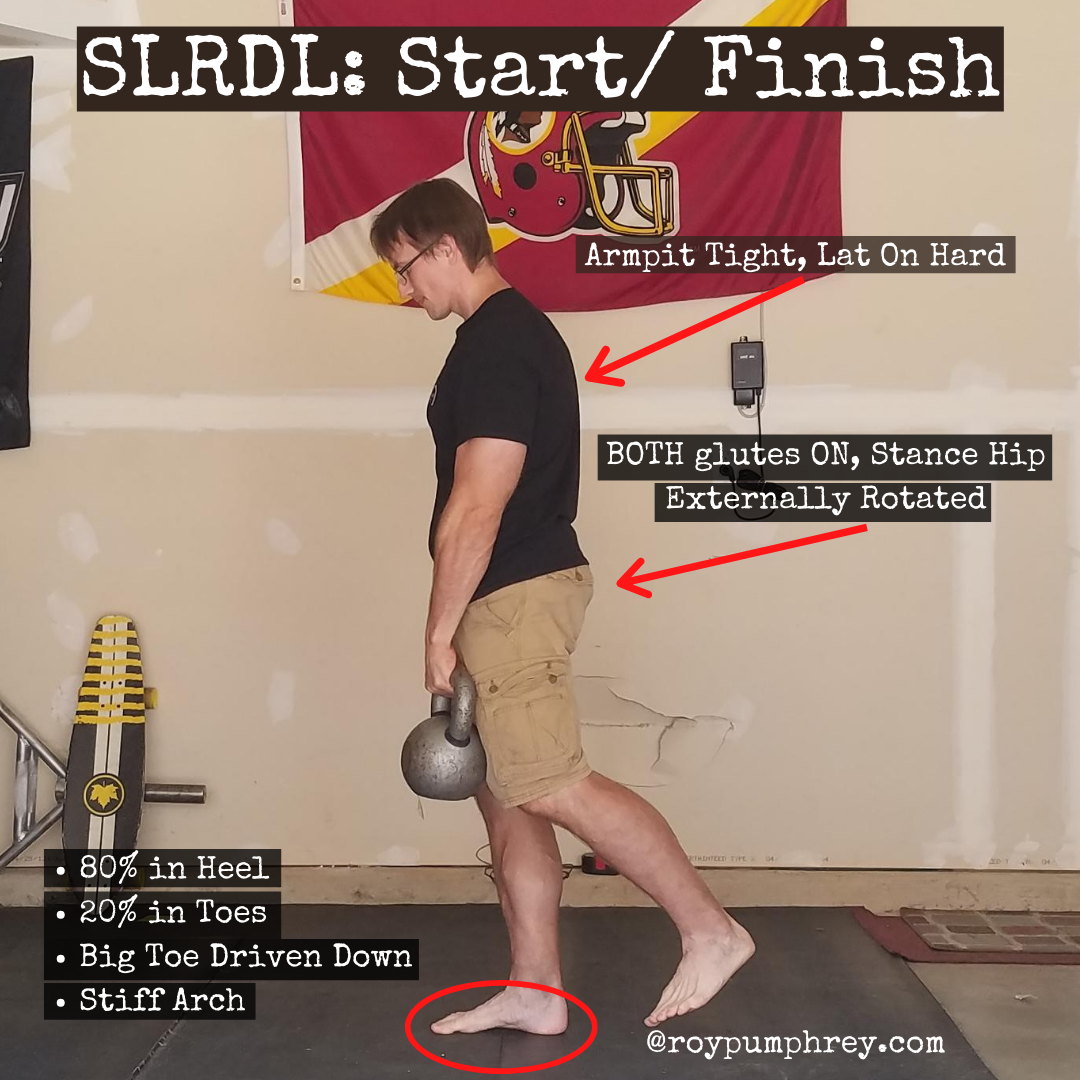
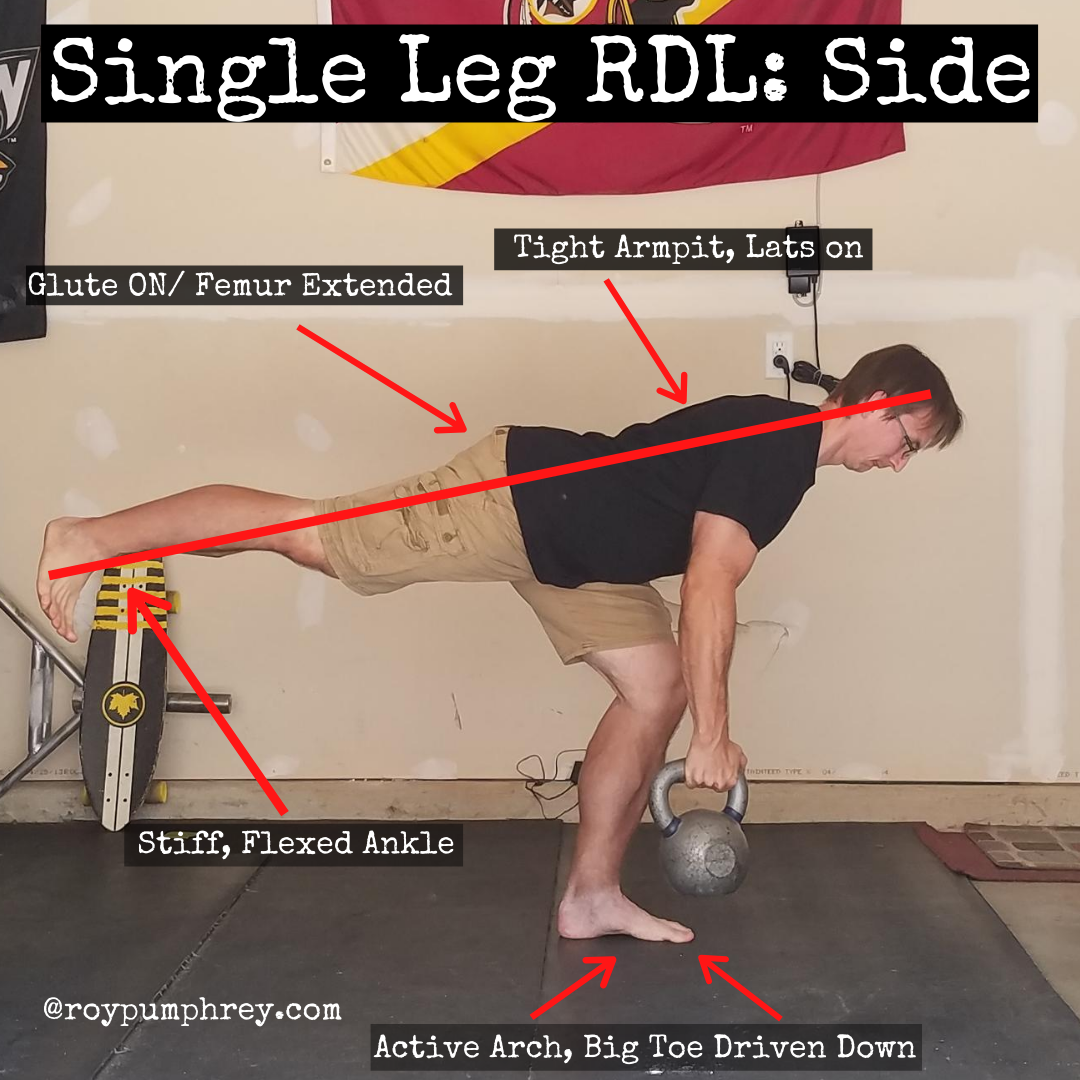
Checklist:
- STAND on a hard glute (externally rotated/ knee out), lats tight (armpit squeezed) and foot gripping the floor.
- Unloaded toe OFF the ground, but glute on BEFORE you hinge
- Unlock the knee of the stance leg. <—-But don’t drive it forward.
- Hinge back into the hip as far as you can without driving the knee forward or rounding over.
- Grip the floor (heel down) and PULL the hip forward
- Finish on a hard glute at the top.
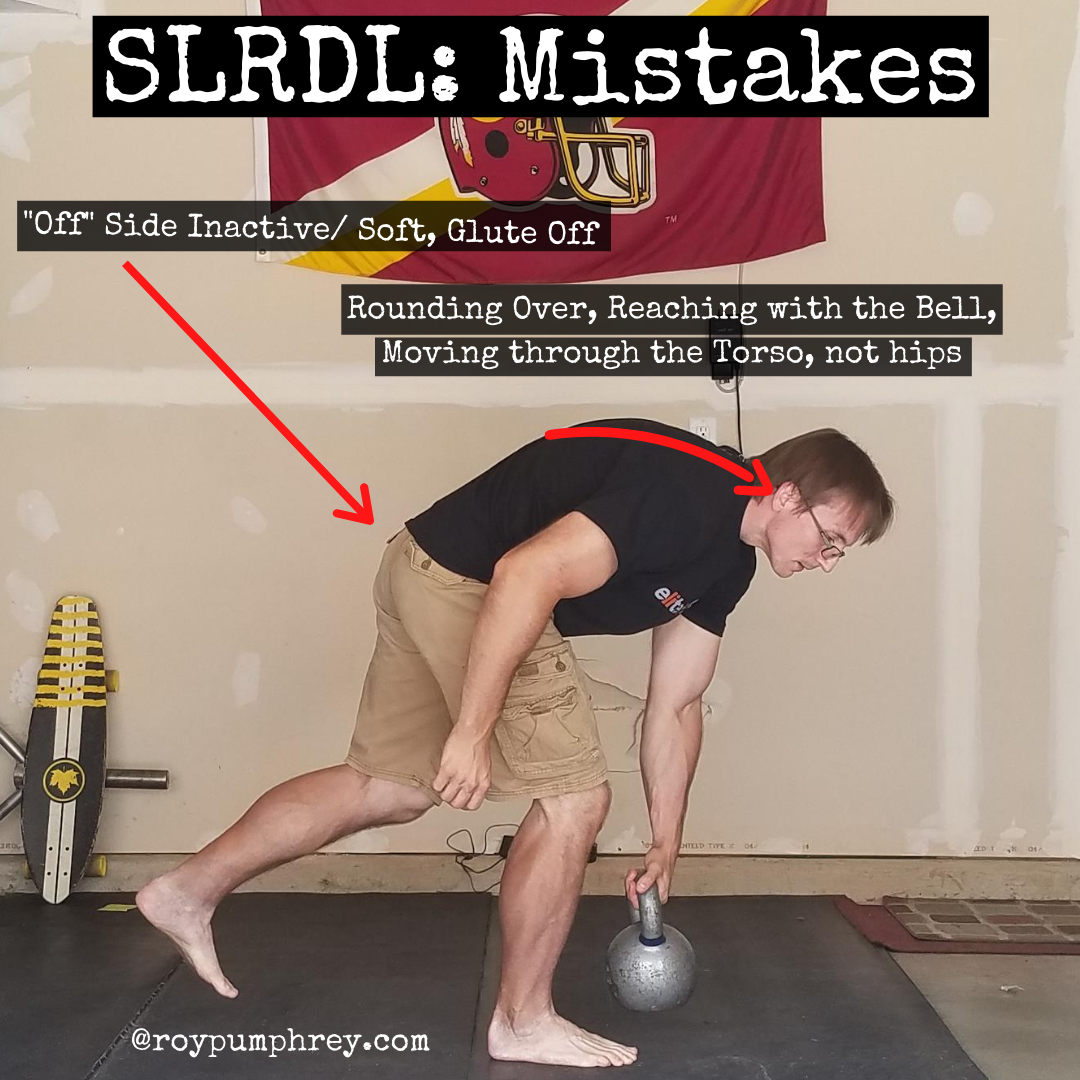
Bro Tips:
- The more tension you create with the lat (armpit tight/ squeeze the Troll head) the harder the glute will fire.
- Think “Back”, not “Down” from the start <—-Get “behind” the knee.
- If you find yourself rounding over, SLOW DOWN.
- Need more hinge? Either Karate chop yourself at the crease of the hip or grab your butt, like, right on the meat. Focus on moving through the karate chop or into the hand on the glute.
- Try to maintain “as vertical a stance leg shin as possible”. No, it probably wont be perfectly vertical, “as vertical as possible”.
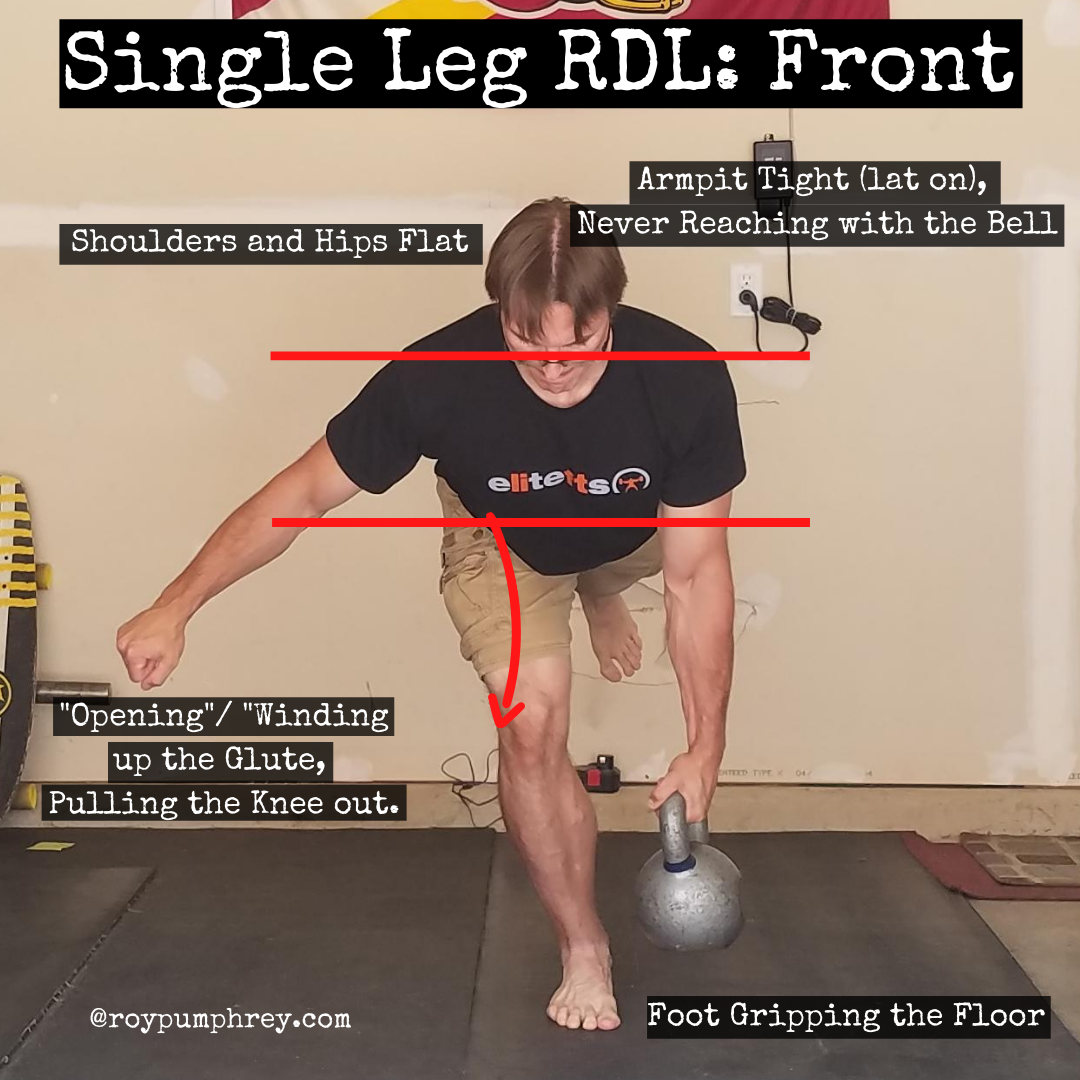
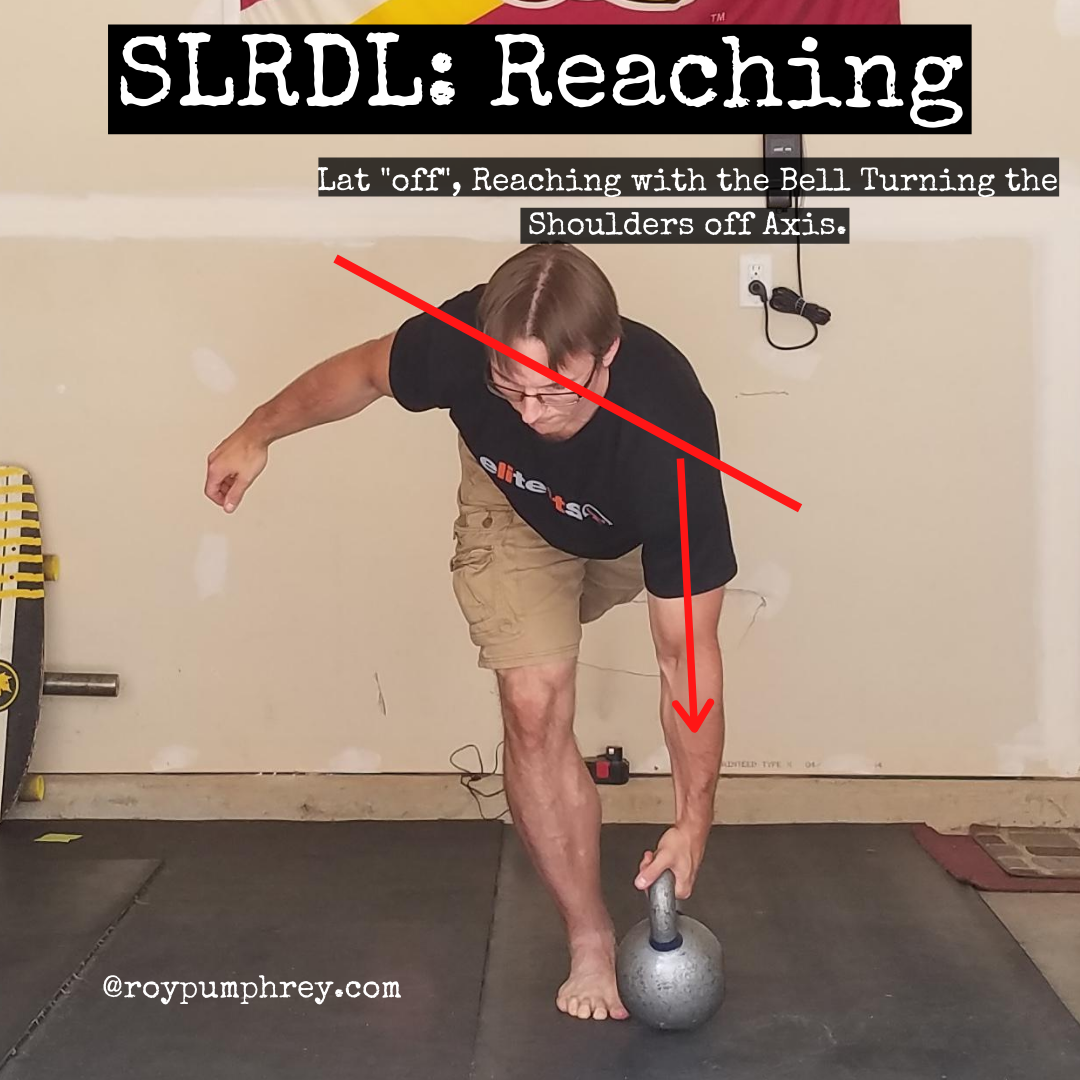
Single Leg RDL vs Deadlift
Its simple, in the Single Leg RDL the bell never rests on the floor.
In the Single Leg Deadlift, the bell resets on the floor each rep, like a regular deadlift.


